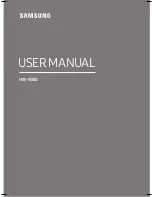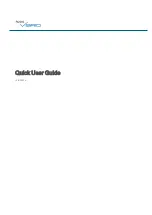
PASSPORT
®
P-80
(This is the model name for warranty claims)
5
PCB EXCHANGE POLICY
Parts marked with a single asterisk (
*
) in the Part
Lists are not field replaceable. If a failure due to
one of these components is detected, please con-
tact the FMIC Customer Service Department to
order the complete PCB Assembly.
CIRCUIT DESCRIPTION
This section provides concise information about new
or unusual circuitry designs incorporated into this
amplifier model. The purpose is to aid the service
technician by providing insight into the design areas
most likely to become obstacles in troubleshooting.
Information is focused for its effective use while
maintaining the security of Fender® proprietary in-
formation wherever possible.
The P-80 consists of the following modules.
1. Mixer
Section
2. Digital
Reverb
Section
3. Signal Processor Circuit and System EQ Circuit
4. Power
Amplifier
5. Switch Mode Power Supply Unit (SMPSU)
Mixer Section
The mixer section is mainly made up of operational
amplifiers as gain stages and therefore a technical
description will not be used here. Following is a ba-
sic circuit description to familiarize you with the
layout of the circuit.
The Mic/line section is made up of 3 microphone /
line inputs each with a first stage preamplifier for
balanced or unbalanced inputs (locate on the mixer
board). Line inputs can operate as either balanced
or unbalanced if TRS or TR 1/4” jacks are used re-
spectively. Gain selection of 1dB/+30dB is made by
switching a different value resistor in the input
stage. At this point on channel one, the signal is
picked off for the VIP control ducking circuit made
up of U1B. After the input stage there is one knob
for contour control, followed by an auto-pad level
control where the signal splits off into the rev/aux
bus and main signals with the main signals going to
a pan circuit. Here the main signal is split between
left and right channel signal bus. Channel three also
has an additional input via a pair of RCA connectors
where the signals are summed into mono which
may be used as an auxiliary audio signal input. This
circuit consists of an auto-pad level control, low fre-
quency and high frequency tone controls, and a
rev/aux send control.
The audio bus is connected to three FETs that per-
form ducking of the signals on the bus with the
exception of channel one which is the drive circuit
for the VIP ducking circuit. This function is provided
by U1B.
Bus signals are buffered by U8A and drive the tape
out connections and the main master level control
circuitry made up of U9A. Rev/Aux signals are buff-
ered by U12B and feed the mono aux send output.
The main level control is auto-pad configured and
drives the speaker EQ circuitry made up of U10A.
Note: Channel 1 Mic/Line reverb function will be af-
fected by VIP control making announcements on
Channel 1 dry.
The mixer board also contains part of the signal
processor circuit and the system EQ circuit for the
power amplifier. These circuits are an integral part
of the power amplifier and appear after the return
signal path.
These circuits will all be discussed later in this
document.
Digital Reverb Section
The DSP Reverb PCB module receives the input
REV/AUX signals at pin 4 of connector CN401. The
Содержание PASSPORT P-80
Страница 21: ...3 PASSPORT Mixer PCB Mixer PCB...
Страница 26: ...8 PASSPORT SMPS PCB...
Страница 30: ...12 PASSPORT Test Point Information TP10 TP11...
Страница 31: ...13 PASSPORT Test Point Information TP12 TP13...
Страница 32: ...14 PASSPORT Test Point Information TP14 TP15...
Страница 33: ...15 PASSPORT Test Point Information TP16 TP17 DC8V TP18 DC5V TP19...
Страница 34: ...16 PASSPORT Test Point Information TP20...






































